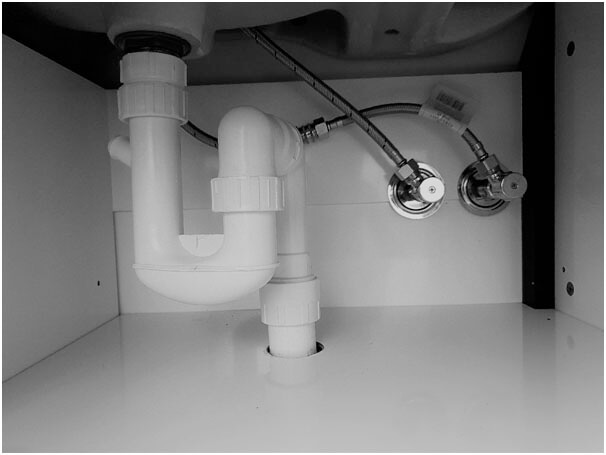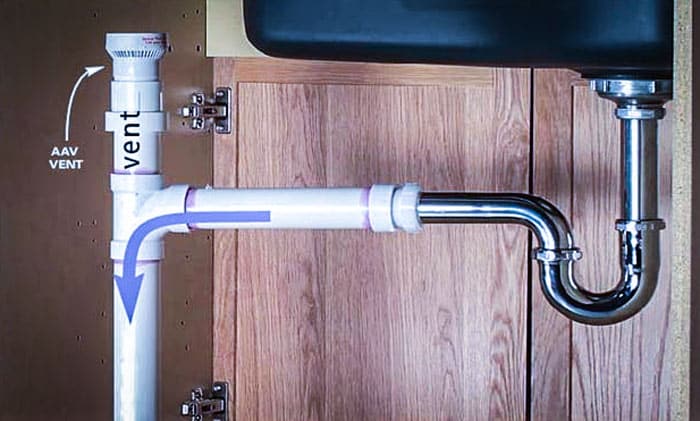The Significance of Adequate Ventilation in Your Home's Plumbing Systems
The Significance of Adequate Ventilation in Your Home's Plumbing Systems
Blog Article
What are your thoughts concerning Why Plumbing Air Vents Are Important?

Appropriate air flow in pipes systems is commonly ignored, yet it is vital for preserving the functionality and security of your home's plumbing. Ventilation assists control atmospheric pressure, protect against the build-up of damaging gases, and make sure the effective removal of waste. In this overview, we will certainly check out the significance of correct plumbing air flow, just how it works, and the advantages it gives your plumbing system.
Comprehending Air Flow in Plumbing
Air flow in pipes refers to the network of pipes that allow air to move through the drain system. These vents offer several purposes, consisting of controling atmospheric pressure within the pipes, preventing sewer gases from entering the home, and assisting in the smooth flow of wastewater.
How Ventilation Works in Pipes Systems
Atmospheric Pressure Policy
Proper air flow preserves well balanced air pressure within the pipes system. When water streams with pipes, it displaces air. Without sufficient ventilation, this variation can create negative pressure, causing slow drains or siphoning of water from catches, which can trigger undesirable smells to leak into the home.
Stopping Sewage System Gas Buildup
Among one of the most important functions of plumbing vents is to prevent drain gases, such as methane and hydrogen sulfide, from building up within the home. These gases can pose major health risks and are very flammable. Vent pipes permit these gases to run away securely outdoors.
Helping in Waste Removal
Air flow assists in the effective elimination of wastewater by preventing airlocks in the drain system. When air can stream freely via the vents, it permits water and waste to stream smoothly via the pipes, decreasing the danger of blockages and back-ups.
Types of Pipes Vents
Key Heap Vent
The primary stack air vent, also called the vent pile, is the primary air vent in a plumbing system. It expands from the major drain line up through the roofing system, enabling gases to leave and fresh air to enter the system.
Branch Vent
Branch vents attach to the main stack air vent and offer individual fixtures, such as sinks, commodes, and showers. These vents ensure that each fixture has appropriate air flow to operate effectively.
Air Admittance Valve (AAV).
An Air Admittance Shutoff (AAV) is a one-way shutoff that allows air to get in the plumbing system without the requirement for a conventional air vent pipeline prolonging via the roofing system. AAVs are commonly utilized in improvements or locations where installing a conventional air vent is unwise.
Indications of Poor Ventilation in Pipes.
Slow Draining Fixtures.
If your sinks, bathtubs, or commodes are draining slowly, it could be a sign of inadequate air flow. Insufficient air circulation can produce a vacuum cleaner result, making it challenging for water to drain correctly.
Gurgling Sounds.
Gurgling noises coming from drains are often an outcome of air being drawn through water catches as a result of negative pressure in the pipelines. This is a clear indicator of insufficient ventilation.
Undesirable Smells.
Sewer smells inside your home are a warning that your pipes system is not properly aerated. This might suggest that drain gases are not being adequately aired vent outside, resulting in possibly hazardous problems.
Typical Ventilation Blunders.
Poor Vent Sizing.
Utilizing undersized vent pipes can result in poor air circulation and stress discrepancies in the system. It's necessary to make use of vents that meet the details requirements of your pipes system.
Improper Vent Positioning.
Positioning vents as well far from the components they offer can lower their efficiency. Proper placement guarantees that air can stream easily and successfully via the system.
Ignoring Code Needs.
Building codes provide specific guidelines for pipes ventilation. Disregarding these codes can cause a system that fails to function appropriately and may result in costly fixings or carcinogen.
Advantages of Appropriate Ventilation.
Improved System Performance.
Appropriately ventilated pipes systems operate much more successfully, with fewer obstructions, faster draining, and less stress on the pipes. This effectiveness expands the lifespan of the plumbing system.
Improved Air High Quality.
By stopping sewer gases from entering your home, appropriate air flow adds to better indoor air high quality, making your living setting healthier and a lot more comfy.
Preventing Water Damage.
Sufficient air flow assists stop water from being siphoned out of catches, which can cause sewage system gases going into the home and triggering water damage over time.
Steps to Make Sure Appropriate Ventilation.
Consulting Plumbing Codes.
Constantly speak with local pipes codes when developing or changing your plumbing system. These codes provide the necessary guidelines for proper airing vent and guarantee your system satisfies safety and security criteria.
Routine Evaluation and Upkeep.
Normal evaluations can aid determine possible ventilation problems prior to they become major troubles. Maintenance tasks, such as cleaning up air vent pipelines and looking for blockages, are vital for maintaining the system in good working order.
Specialist Installment.
For brand-new installations or major alterations, it's wise to work with a professional plumbing. They have the experience to make sure the air flow system is properly developed and mounted according to code.
Conclusion.
Correct air flow is a vital part of any type of pipes system, making sure that it works successfully and securely. By understanding the value of ventilation, recognizing the indications of inadequate air flow, and taking steps to preserve your system, you can avoid pricey concerns and secure your home's air quality.
4 Things You Should Know About Your Plumbing Vents
What Plumbing Vents Are
Also called a vent stack, a plumbing vent is a vertical pipe attached to your drain line that runs through your roof. The plumbing vent pipe, or plumbing air vent, removes gas and odors from your plumbing system and allows fresh air to enter the pipes, helping the water to flow out of the drain pipes.
What Plumbing Vents Do
Plumbing vents have two basic functions. One of which is to allow unpleasant smelling wastewater and sewer gasses to escape your plumbing system instead of entering your home. Plumbing vent pipes are typically located on roofs, away from windows, to ensure the fumes exit the home completely.
The other function of the plumbing vent is to move fresh air into your plumbing system. This helps move water through every plumbing fixture in your house, like toilets and sink drains. Think of the way in which you need to let a little air into the bottle as you pour soda in order to make the drink flow smoothly.
Different Types of Plumbing Vents
True vent: This is the most common vent option. In simplest terms, a true vent is a vertical pipe attached to your drain line that exits through the roof. They often function as the main vent that other fixtures can connect to. Re-vent pipe or auxiliary vent: Attached to the drain line near specific plumbing fixtures, re-vent pipes run up and over to connect to the main vent. Common vent: Two plumbing fixtures installed on opposite sides of a wall are typically tied into the vent stack using something known as a sanitary cross. Wet vent: This venting option operates as a drain pipe and a vent at the same time. Wet vent drainage systems drain water from one fixture while venting the air from another. Although they’ve been used for over 100 years, wet vent systems have only recently been added to the plumbing code in many areas. If you’re planning on installing one in a bathroom remodel, make sure you check your local code prior to construction. Loop vent: For free-standing fixtures like kitchen island sinks, loop vents are ideal. These vent pipes run under the floor, rise from the P-trap, and create a loop inside the cabinet sink. Air admittance valve: An AAV is a one-way mechanical valve typically installed at the site of the plumbing fixture. AAVs allow venting to occur without having to tie into a larger venting system. They’re ideal for venting fixtures where you aren’t able to easily connect to an existing vent system. Common Plumbing Vent Issues
Although vent pipes typically don’t have water flowing through them, they’re still subject to many typical plumbing issues. For example, clogs are one of the most common problems associated with sewer vent pipes. If your vent pipe gets clogged, all of your plumbing fixtures tied into the vent stack will be affected.
A sink with a slow drain that bubbles and gurgles or a strong sewage smell around your toilet are both indicators that your toilet vent pipe is clogged. Because most vent pipes exit through the roof, old leaves, twigs or even a bird’s nest could be clogging the pipe.
Clogs in your vent pipe system cause a buildup of negative pressure, meaning that water won’t be able to flow out of your home very well. It’s similar to putting your finger over the opening of a straw to trap water inside. When you remove your finger, the water is able to flow out of the straw.
If you suspect you have any blockage in your vent, make sure you have a professional come examine the situation. Left unchecked, a blocked air vent can lead to other costly repairs, like leaks and sediment buildup.
Under Pressure
Pipe vents are essential aspects of a home’s plumbing system. Owning a home means learning about all sorts of things you never put much thought into before. But by understanding as much as you can about the important systems of your home, you can keep those budgets intact and those anxiety levels low.
https://www.homeserve.com/en-us/blog/home-improvement/plumbing-vents/

I discovered that content on What Is A Plumbing Vent & How Do They Work? when doing a lookup on the search engines. For those who appreciated our post plz be sure to pass it around. Thanks a bunch for being here. Return soon.
Quote & Schedule Report this page